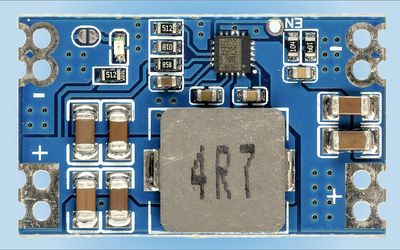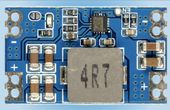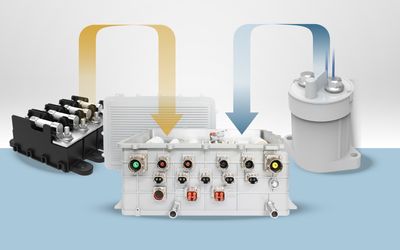Renesas Electronics VersaClock 7 Evaluation Boards
Testing and development platform for evaluation of VersaClock 7 family of clock generators.
Technical Specifications
| Type | Clock and Timer Development Tool |
| Operating Supply Voltage | 3.3 |
| Applications | Communication Systems, Networking Devices, Industrial Automation Systems |
| Supported Devices | RC21012A/RC31012A EVK |
| Interface Types | USB 2.0, USB 3.0 |
| Advanced Features | Spread Spectrum, Jitter Attenuation, Glitch-free frequencies |
| Compliance | RoHS 2011/65/EU amended by 2015/863 |
Overview
Renesas Electronics VersaClock 7 Evaluation boards are designed to test VersaClock 7 programmable clock generators. Featuring up to 27 programmable clock configurations, the development board offers redundant backup input and low-phase noise for system design. The board offers various output signals of different types and frequencies including LVDS, CMOS, differential, and LVPECL. VersaClock 7 evaluation board is suited for testing electronic systems that require flexible clocking systems, such as networking devices, industrial automation systems, and communication devices.
Testing and Optimization for Clock-Sensitive Circuits
The VersaClock 7 board is designed for evaluating RC21012A and RC31012A programmer boards. It provides multiple output channels that can work independently to generate different types of frequencies. The board is suited for testing and evaluating clock generator circuits to analyze their performance for real-world applications, ensuring high-precision and signal stability for synchronous operations, especially in digital electronic systems. So, it helps design engineers evaluate multiple clock generators and devices to pick the most suited design for custom circuits. Its applications include testing, tuning, and optimization, helping developers to reduce compatibility issues with clock circuits.
All input and output pins are accessible through different types of headers and connectors. In addition, the USB interface allows the developers to program the clock generators via an intuitive user interface. For advanced-level programming, the Renesas VersaClock 7 board features jitter attenuation, spread spectrums, and glitch-free frequency changes. The board also features jumper-selectable voltage settings for 1.8, 2.5, and 3.3 V operations. It uses a USB-C cable to power up, at an input voltage of 3.3V.
Advanced Evaluation Features for Modern Electronic Systems
The development board features an array of modules for accurate clock signal generation. It has a crystal overdrive circuit to produce harmonically rich signals for the evaluation of programmer boards. The VersaClock 7 board features four General Purpose Inputs (GPIs) and five General Purpose Input/Output (GPIO) pins with LED indicators and a DIP switch. Its communication modules include I2C and SPI communication.
It also provides test points for high-impedance probes, making it a viable option to test Hi-Z circuits, minimizing the current consumption on the load devices. Hence, it can be calibrated with standard oscilloscopes.
The advanced clock generation features include Spread spectrum capabilities, to test signals over a wide range of frequencies thanks to internal modulating circuits. It allows testers to evaluate clock signals over frequencies other than the original bandwidth of the signal. This feature enhances signal reliability and tests its resistance to interference and jamming. The spread spectrum feature also ensures higher security and bandwidth efficiency, helping developers to test network device security, especially in wireless systems.
Addressing the sensitivity issues in digital electronic systems, the VersaCLock 7 evaluation board provides glitch-free frequencies for testing purposes. As a result, it reduces the risk of incorrect data transfer ensuring a more accurate evaluation of the RC21012A and RS31012A boards. The system generates clean and glitch-free signals with no jitter and noise, discarding any chances of amplitude and frequency fluctuations in high-precision digital signal processing units and communication systems.
Where to find it

Mouser Electronics
Mouser Electronics is a worldwide leading authorized distributor of semiconductors and electronic components.









